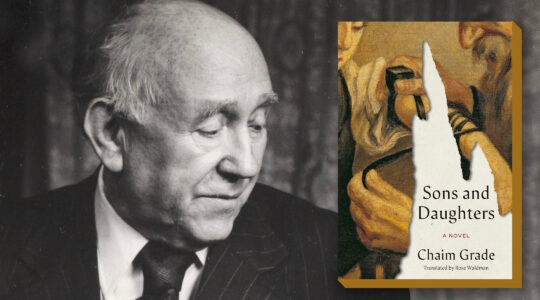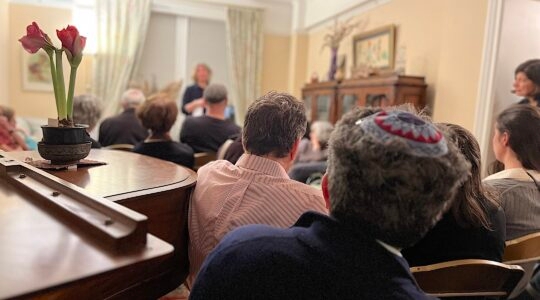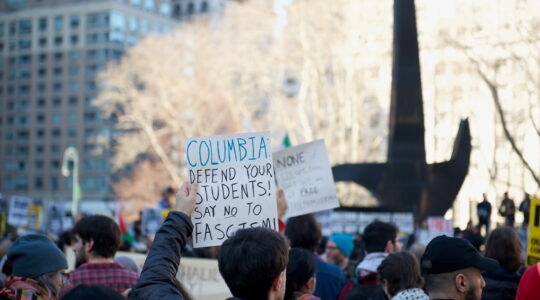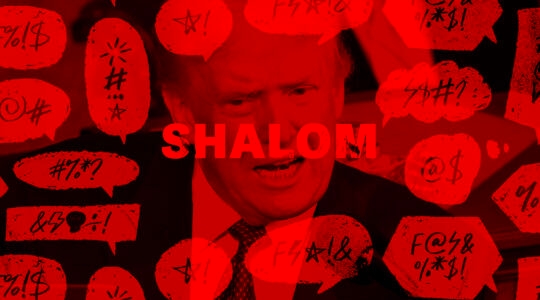First the Pew survey, then the eulogies for Conservative Judaism. Compared with ten years ago, the absolute number of Conservative Jews has declined precipitously. It has the lowest retention rate among the three major denominations. Worst of all, only 11 percent of respondents under the ages of 30 define themselves as Conservative. But hold on.
It is true that the Conservative Movement is not doing so well.
It is also true that Conservative Judaism is doing quite well.
Conservative Judaism, as contrasted with the Conservative Movement, is a particular approach to Judaism. It stands for “tradition and change,” or as someone called it “authenticity and relevancy.” It also means analyzing Judaism’s sacred texts, like the Hebrew Bible, historically and scientifically. Conservative Judaism understands those texts as shaped by both indigenous “Torah only” authors and themes, while also impacted by the forces of societies and religions that surrounded ancient Israel. Gauging by those two core definitions, Conservative Judaism is flourishing, even if some of its institutions are not. How so? Because the two lenses of tradition and change, and the historical study of Judaism’s sources, increasingly shape the vision of movements both to the left and right of my own. Indeed, these two core principles of Conservative Judaism have permeated both Reform and Modern Orthodoxy.
The shift of Reform towards tradition has been widely observed. The new Reform Prayer Book is more traditional, Shabbat and kashrut are given a higher priority in terms of observance, and it is commonplace for worshippers wear a kippah and tallit. In addition, strong support of Israel and the Hebrew language are now central to the Reform movement.
All these late 20th century tilts to tradition followed the pattern of Conservative Judaism and Solomon Schechter, but a century later.
Modern Orthodoxy, however, has moved in the opposite direction. In significant ways, it too has liberalized towards Conservative’s “change.”
Prenuptial agreements, encouraged by the Rabbinical Council of America, have since the 1990s offset the unilateral power given to men to initiate or refuse a get, or religious divorce. “Prenups” provide that even when the couple ceases to share a residence, the husband’s obligation under Jewish law to support the wife becomes legally enforceable as long as they are married. This is a strong incentive for the husband to acquiesce and initiate the get. The Orthodox prenup follows by decades the so-called Lieberman Clause of the Conservative ketubah, which already in the 1950s required a recalcitrant husband to have the Rabbinical Assembly bet din adjudicate his arranging a get after a civil divorce.
Bat Mitzvah is becoming a norm in many Modern Orthodox synagogues, emulating the Conservative ritual begun in the 1920s. To be sure, Orthodox synagogues do not allow the girl to have an aliyah and read the Torah as in many Conservative synagogues. But depending on the synagogue, girls celebrate this rite of passage in creative ways, like chanting a non-Torah text before the congregation; delivering a d’var Torah; and/or leading services in a separate women’s only group.
And note the increase in women yeshivot and hakafot on Simchat Torah, even in Israel!
Regarding the scientific and historical approach to sacred texts, the Maggid imprint of the respected Koren Press offers “contemporary approaches to traditional texts.” Its salesperson at a recent United Synagogue convention pitched the books as “incorporating modern Biblical scholarship” to the traditional texts.
My roots and allegiance to Conservative Judaism run deep and wide. My father, a graduate of JTS, served a Conservative Congregation in Columbus, Ohio for over 40 years. My own service here in Metuchen NJ is approaching 45 years. I attended Camp Ramah, served as president of USY in my youth, and later was president of the Rabbinical Assembly.
I am saddened by the struggles of our movement and am confident its leaders will find the means of revival. If not, though, I am sanguine that Conservative Judaism lives because much of its take on tradition and change has leaked into Reform and Orthodoxy. According to Brandeis University professor Jonathan Sarna, “Solomon Schechter never wanted to create a separate movement.” It was the Conservative ideology he hoped would embrace much of American Jewry. It increasingly has.
Rabbi Gerald Zelizer is spiritual leader of Congregation Neve Shalom in Metuchen, NJ.
The New York Jewish Week brings you the stories behind the headlines, keeping you connected to Jewish life in New York. Help sustain the reporting you trust by donating today.




